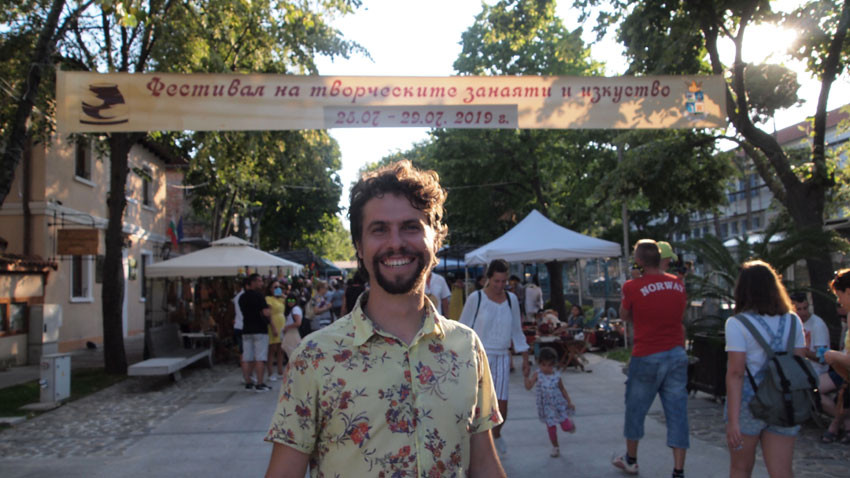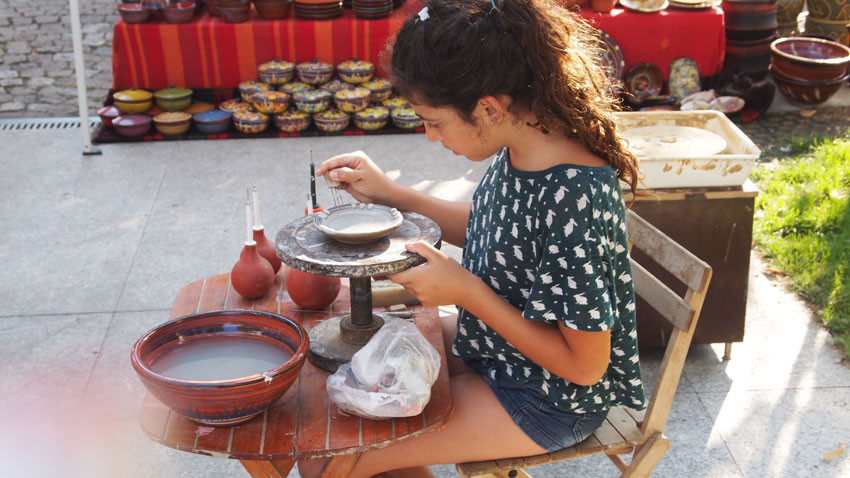Tsarevo, a small town in the southern portion of Bulgaria’s Black Sea coastline, is hosting an Arts and Crafts Festival for the 4th time.
Pavilions in the town’s centre house workshops and display works of art. Tourists are able to give free rein to their creative streak and join various creative activities, like pottery, wool felting, woodcarving, glass staining.

Besides the handicrafts of Bulgaria, other crafts coming from different cultures, have been gaining popularity with the combination of different traditions in a globalized world helping to preserve each one of them. That is why the festival in Tsarevo features a henna painting pavilion – an Indian tradition, adapted to Bulgaria, with the pictures in henna featuring Bulgarian embroidery and other traditional elements. Wholesome and delicious food, pleasant music, and lots of surprises – here is more about the festival from its organizer Luchezar Dimitrov:

“Handicrafts are a way of life. Once people develop an interest in a given handicraft, they live with their mentors, observing their way of life and the objects they craft every day – and learn how to live. So, besides “stealing the trade”, as we say, the apprentice “steals” the way of life as well.
The idea of the handicrafts festival is to bring people in contact with one another, to demonstrate how much work, how much inspiration goes into the making of the objects on show. They are the bond between the craftsmwen and the public. When there is an industry standing between the man in the street and the craftsman, this bond is severed, and the product loses its individuality. That is why at our festival we have workshops where anyone can come in contact and try their hand at different arts and crafts.”

 “I have been felting wool for five years, and I use ancient techniques – wet and dry felting,” says Margarita Cholakova, who is an animator by profession. “Wet felting is used mostly to make shawls, hats, clothes. Many colleagues, and not only in Bulgaria, make shoes. I use it as background for my paintings. Dry felting is another technique – the woolen yarns are woven into one another using a special notched needle. The difference is that wet felting is for bigger surfaces. Using a needle is much slower, there is always the risk of pricking your fingers, but in the end it turns out beautifully. I love to make toys out of felt.
“I have been felting wool for five years, and I use ancient techniques – wet and dry felting,” says Margarita Cholakova, who is an animator by profession. “Wet felting is used mostly to make shawls, hats, clothes. Many colleagues, and not only in Bulgaria, make shoes. I use it as background for my paintings. Dry felting is another technique – the woolen yarns are woven into one another using a special notched needle. The difference is that wet felting is for bigger surfaces. Using a needle is much slower, there is always the risk of pricking your fingers, but in the end it turns out beautifully. I love to make toys out of felt.

Wool has many different properties – it is antistatic, anti-allergic, moistureproof, proto-Bulgarians even made saddles out of it. It is a magnificent material.”
Photos: Ekaterina Ivanova
When a contribution in the sphere of science is transformed into the basis for subsequent in-depth research the boundaries between countries and continents seem to melt away – literally and figuratively. That is precisely what happened during a..
Sofia is hosting the finals of ER Champ 2025 — described by the organisers as the world’s largest international escape room competition . Taking place on 19 and 20 October, the event will bring together twelve teams from around the globe , each of..
More than 500 people from across Bulgaria are gathering today in the village of General Todorov, near Petrich, for the national festival “Once Upon a Time… When Bread Had a Soul,” the village mayor, Stanislav Stankov, has announced. Now in its fourth..
A celebration of children’s love of books and imagination will take place on 25 October in Los Angeles, organised by the Bulgarian School “St. St. Cyril..
The cool autumn evenings give us a reason to immerse ourselves in the cosy atmosphere of restaurants in Sofia and try new flavours..
At 04:00 Bulgarian time on October 26, 2025, we must turn our clocks back one hour. This means one more hour of sleep, but it..

+359 2 9336 661
